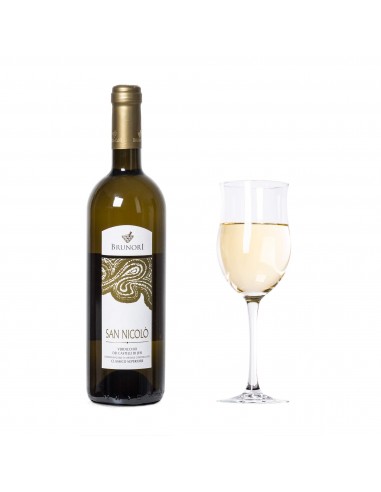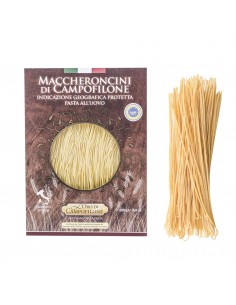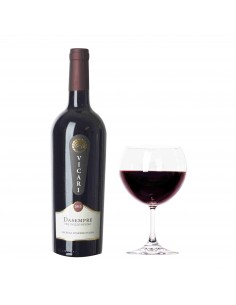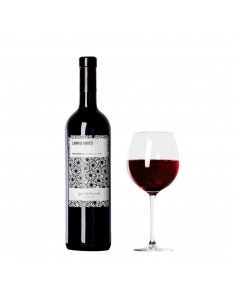Verdicchio dei Castelli di Jesi D.O.C Classico Superiore “San Nicolò”
This Verdicchio Classico Superiore wine takes its name "San Nicolo" from the land where the vineyard from which it is produced is located. It's a truly superb wine with a full and intense aroma and typical fragrance of Verdicchio grapes with which it's entirely made.
Type: Verdicchio dei Castelli di Jesi D.O.C.
Producer: Brunori Azienda Vitivinicola
Made in: Marche (Italia)
Alcohol content: 14.2%
This Verdicchio Classico Superiore wine takes its name "San Nicolo" from the land where the vineyard from which it is produced is located. It's a truly superb wine with a full and intense aroma and typical fragrance of Verdicchio grapes with which it's entirely made.
Azienda vitivinicola Brunori. Via S. Nicolò, 4. 60038 San Paolo di Jesi (AN). The company is located in the municipality of San Paolo di Jesi (AN), in Contrada San Nicolò, at an altitude of 200 meters above sea level and it was founded in1956 by Mario Brunori, immediately flanked by his son Giorgio. Today the company is managed by the grandchildren Carlo and Cristina who inherited from the grandfather his great experience in the field of viticulture and his deep interest in the knowledge and application of modern winemaking techniques. Both sommeliers, Carlo and Cristina have been able to calibrate tradition and experimentation, and consolidated cultivation techniques and modern tools in the search of excellence. Over the years the company is grown and modernized without abandoning its traditional character. The family personally takes care of the entire production cycle: from the cultivation of the vineyard to vinification, from processing in the cellar to bottling and sale.
Verdicchio grapes. It contains solfites.
General Information: Choosing the right wine is linked to the dish to which it accompanies. In general, white wines match best with fish based starter, to fish and vegetable based main courses, white meats, sea food, fresh cheese and cheeses with herbs. How to drink: Each wine must be brought to the table at the proper temperature; the white and rose wines should be served at a temperature lower than the red ones to exalt the organoleptic properties of wine that would be altered if the service temperature is not the proper one. All the wine goes oxygenated before being served, the time varies depending on the aging of the wine, if a wine is young this procedure is entirely superfluous. Red wines require a longer oxygenation time than the white ones. If you want to taste different types of wine with vary degrees, it is advisable to adopt a policy of climb; wines with a lower alcohol content should be drunk before.






































